![ArtsNow Learning: Reading with Cups, and More! [PDF]](https://openspace.infohio.org/static/newdesign/images/materials/default-thumbnail-index.png)
In this lesson, students will explore how music and language arts naturally overlap to promote literacy as they cultivate their creative and critical thinking.
- Subject:
- Arts
- Material Type:
- Lesson Plan
- Provider:
- ArtsNow
- Date Added:
- 10/01/2022
![ArtsNow Learning: Reading with Cups, and More! [PDF]](https://openspace.infohio.org/static/newdesign/images/materials/default-thumbnail-index.png)
In this lesson, students will explore how music and language arts naturally overlap to promote literacy as they cultivate their creative and critical thinking.
![ArtsNow Learning: Reading with Cups, and More! [PDF]](https://openspace.infohio.org/static/newdesign/images/materials/default-thumbnail-index.png)
In this lesson, students will explore how music and language arts naturally overlap to promote literacy as they cultivate their creative and critical thinking.

As part of a review and close reading section of BBC Bitesize, this site presents an overview of various purposes of reading, including a five-bullet point explanation of reading purposes.

Links to 25 lessons that focus on skills within third grade reading standard RL.3.10.

Contains plans for one 60-minute lesson that teaches about a reading strategy called Character Perspective Charting. In addition to student objectives and standards, these instructional plans contains links to PDF handouts and links to sites used in the lessons as well as assessment and reflection activities.

Find instructions, forms, and inspiration to help students to share their reading excitement with the class.

This site features family reading activities that will guide parents with their children's reading development.
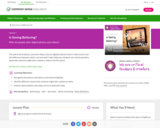
Why do people alter digital photos and videos? The web is full of photos, and even videos, that are digitally altered. And it's often hard to tell the difference between what's real and what's fake. Help your students ask critical questions about why someone might alter a photo or video in the first place. Approximately 45 mins.
LESSON OBJECTIVES: Recognize that photos and videos can be altered digitally. Identify different reasons why someone might alter a photo or video. Analyze altered photos and videos to try to determine why.

This is a collection of 23 short videos of literacy strategies for PreK-3

In this interactive Kindergarten through 5th grade activity, the world of fitness and literacy unite! As the teacher reads the book Marvin K. Mooney Will You Please Go Nowíń by Dr. Seuss, studentslisten carefully and safely jump up out of their chairs with their hands over their heads every time they hear the word go.íń This is a great lesson combining psychomotor, cognitive and affective skills.

Short discussion of teaching students the importance of why they are reading a particular text. Also provides some commentary from a teacher who used this method and an example of some questions students wanted to answer from a particular reading. [Requires Adobe Reader.]
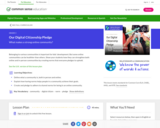
What makes a strong online community? Belonging to various communities is important for kids' development. But some online communities can be healthier than others. Show your students how they can strengthen both online and in-person communities by creating norms that everyone pledges to uphold. Approximately 45 mins.
LESSON OBJECTIVES: Define what a community is, both in person and online. Explain how having norms helps people in a community achieve their goals. Create and pledge to adhere to shared norms for being in an online community.
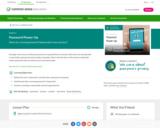
How can a strong password help protect your privacy? Stronger, more secure online passwords are a good idea for everyone. But how can we help kids create better passwords and actually remember them? Use the tips in this lesson to help kids make passwords that are both secure and memorable. Approximately 45 mins.
LESSON OBJECTIVES: Define the term "password" and describe a password's purpose. Understand why a strong password is important. Practice creating a memorable and strong password.
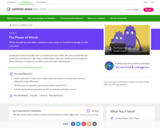
What should you do when someone uses mean or hurtful language on the internet? As kids grow, they'll naturally start to communicate more online. But some of what they see could make them feel hurt, sad, angry, or even fearful. Help your students build empathy for others and learn strategies to use when confronted with cyberbullying. Approximately 45 mins.
LESSON OBJECTIVES: Understand that it's important to think about the words we use, because everyone interprets things differently. Identify ways to respond to mean words online, using S-T-O-P. Decide what kinds of statements are OK to say online and which are not.

ReadWriteThink offers hundreds of classroom resources for teaching and learning language arts and literacy. Resources range from lesson plans to student interactives, to after-school activities, and professional development.

The purpose of this reading lesson is to offer a reading and comprehension lesson based on real-life reading materials. This gives students the opportunity to gain reading comprehension skills from real-life reading material.

A short animation that explains the left-to-right orientation of reading and writing the English language.
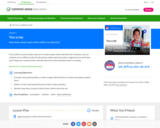
How does what I post online affect my identity? From selfies to social media, many of us create unique online identities for ourselves, and our students are no different. But do kids always understand how others might perceive what they post? Help your students think critically about the online identities they're creating. Approximately 45 mins.
LESSON OBJECTIVES: Consider how posting selfies or other images will lead others to make assumptions about them. Reflect on the most important parts of their unique identity. Identify ways they can post online to best reflect who they are.

This series of videos and interactive activities provide an excellent set of resources for teaching or learning the 8 research based reading strategies provided here. After receiving your "key" you can investigate the features inside and even pick up where you left off later.
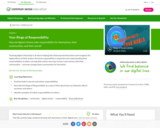
How do digital citizens take responsibility for themselves, their communities, and their world? Teaching digital citizenship is all about helping kids think beyond themselves and recognize the ripple effects of their actions. Personal responsibility is important, but understanding their responsibilities to others can help kids unlock new ways to learn and connect with their communities -- and even change those communities for the better. Approximately 45 mins.
LESSON OBJECTIVES: Examine both in-person and online responsibilities. Describe the Rings of Responsibility as a way to think about how our behavior affects ourselves and others. Identify examples of online responsibilities to others.